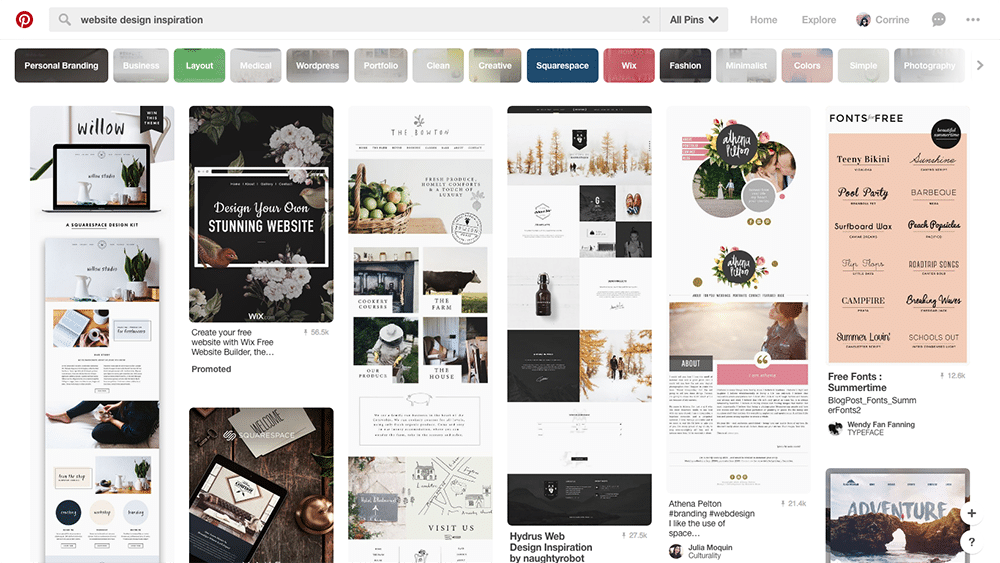Important Tips for Learning Modern Web Design Techniques
Wiki Article
A Thorough Introduction of the very best Practices in Website Design for Producing Accessible and user-friendly Online Platforms
The performance of an online system pivots significantly on its style, which should not just draw in customers but also assist them flawlessly with their experience. Ideal methods in internet style incorporate a series of approaches, from receptive layouts to obtainable navigating frameworks, all aimed at promoting instinctive interactions. Recognizing these principles is vital for designers and developers alike, as they straight influence customer satisfaction and retention. The details of each practice commonly disclose deeper ramifications that can change a fundamental user interface into a phenomenal one. What are the essential components that can raise your system to this degree?Understanding User Experience
Understanding user experience (UX) is pivotal in website design, as it straight influences just how visitors communicate with a web site. A well-designed UX makes sure that individuals can navigate a website intuitively, accessibility the info they look for, and full wanted activities, such as buying or authorizing up for an e-newsletter.Use concentrates on the ease with which users can complete jobs on the internet site. Accessibility guarantees that all customers, consisting of those with specials needs, can interact with the internet site efficiently.
Aesthetic appeals play a crucial role in UX, as visually appealing layouts can boost customer contentment and engagement. Color pattern, typography, and images should be thoughtfully chosen to produce a natural brand identity while likewise helping with readability and comprehension.
Eventually, focusing on customer experience in internet layout promotes greater user fulfillment, urges repeat check outs, and can significantly enhance conversion rates, making it a fundamental aspect of effective electronic approaches. (web design)
Significance of Responsive Design
Receptive layout is an essential element of modern internet development, making sure that internet sites supply an ideal watching experience throughout a large range of gadgets, from desktop computers to smartphones. As individual actions increasingly shifts towards mobile browsing, the demand for web sites to adapt effortlessly to various screen sizes has come to be critical. This adaptability not only boosts usability but likewise considerably impacts user engagement and retention.
A receptive style utilizes liquid grids, versatile images, and media queries, permitting for a natural experience that maintains capability and aesthetic integrity no matter of tool. This method gets rid of the demand for customers to zoom in or scroll flat, causing an extra user-friendly interaction with the content.
Furthermore, search engines, notably Google, prioritize mobile-friendly websites in their positions, making receptive design vital for maintaining visibility and availability. By taking on receptive design concepts, services can get to a broader target market and improve conversion prices, as individuals are more probable to engage with a website that supplies a smooth and regular experience. Ultimately, receptive style is not simply an aesthetic choice; it is a strategic requirement that mirrors a commitment to user-centered design in today's digital landscape.
Simplifying Navigation Frameworks
A well-structured navigation system is important for improving the individual experience on any kind of site. Streamlining navigation frameworks not just aids users in discovering details swiftly but also promotes engagement and reduces bounce prices. To accomplish this, web designers need to prioritize clearness via the use of simple tags and categories that show the content accurately.
Including a search attribute further enhances functionality, enabling users to find content directly. Additionally, applying breadcrumb tracks can supply customers with context about their go to these guys location within the site, advertising convenience of navigating.
Mobile optimization is one more essential element; navigation needs to be touch-friendly, with clearly specified web links and switches to accommodate smaller displays. By decreasing the variety of clicks needed to access content and making certain that navigating corresponds across all web pages, designers can develop a seamless user experience that encourages expedition and lowers frustration.
Prioritizing Access Specifications
Approximately 15% of the global populace experiences some form of impairment, making it important for web developers to focus on access requirements in their tasks. Accessibility encompasses different facets, including visual, auditory, cognitive, and electric motor problems. By sticking to established guidelines, such as the Internet Content Availability Standards (WCAG), developers can develop comprehensive digital experiences that deal with all users.One basic technique is to guarantee that all content is perceivable. This includes offering alternate message for pictures and guaranteeing that video clips have captions or records. Additionally, key-board navigability is important, as more tips here several customers depend on key-board faster ways instead of computer mouse communications.
 In addition, shade comparison should be carefully considered to suit people with aesthetic problems, guaranteeing that text is clear against its history. When making types, labels and error messages have to be descriptive and clear to assist customers in finishing tasks effectively.
In addition, shade comparison should be carefully considered to suit people with aesthetic problems, guaranteeing that text is clear against its history. When making types, labels and error messages have to be descriptive and clear to assist customers in finishing tasks effectively.Last but not least, performing usability screening with individuals that have specials needs can supply invaluable insights - web design. By focusing on availability, internet developers not only comply with legal criteria however additionally broaden their audience reach, cultivating a much more inclusive on-line environment. This dedication to availability is vital for a straightforward and genuinely navigable internet experience
Utilizing Aesthetic Hierarchy
Clarity in design is vital, and using aesthetic hierarchy plays an essential duty in attaining it. Aesthetic hierarchy describes the plan and presentation of aspects in such a way that clearly shows their significance and overviews user focus. By strategically using size, comparison, color, and spacing, developers can create an all-natural circulation that guides individuals with the web content effortlessly.Making use of larger typefaces for headings and smaller sized ones for body message develops a clear distinction between areas. Additionally, employing strong shades or contrasting histories can accentuate critical information, such as call-to-action buttons. White area is similarly necessary; it aids to prevent mess and permits individuals to concentrate on the most essential elements, improving readability and general customer experience.
One more trick element of aesthetic hierarchy is making use of images. Relevant pictures can improve understanding and retention of details while likewise damaging up message to make material extra digestible. Inevitably, a well-executed aesthetic hierarchy not just improves navigation but also fosters an user-friendly interaction with the website, making it more most likely for users to attain their purposes successfully.
Conclusion

Furthermore, the efficient usage of visual pecking order enhances user engagement and readability. By focusing on these elements, internet designers can considerably improve individual experience, guaranteeing that online systems meet the varied demands of all individuals while promoting efficient interaction and contentment.
The efficiency of an online platform pivots substantially on its layout, which have to not just draw in customers however also direct them effortlessly through their experience. By embracing receptive style principles, businesses can reach a wider audience and enhance conversion rates, as individuals are much more likely to involve with a website that provides a smooth and consistent experience. By sticking to established standards, such as the Web Content Availability Guidelines (WCAG), designers can create comprehensive digital experiences that cater to all customers.
White space is just as crucial; it assists to avoid clutter and permits individuals to focus on the most important aspects, enhancing readability and general customer experience.
By prioritizing these aspects, internet designers can significantly boost customer experience, making certain that online systems satisfy the diverse demands of all users while promoting efficient communication and complete satisfaction.
Report this wiki page